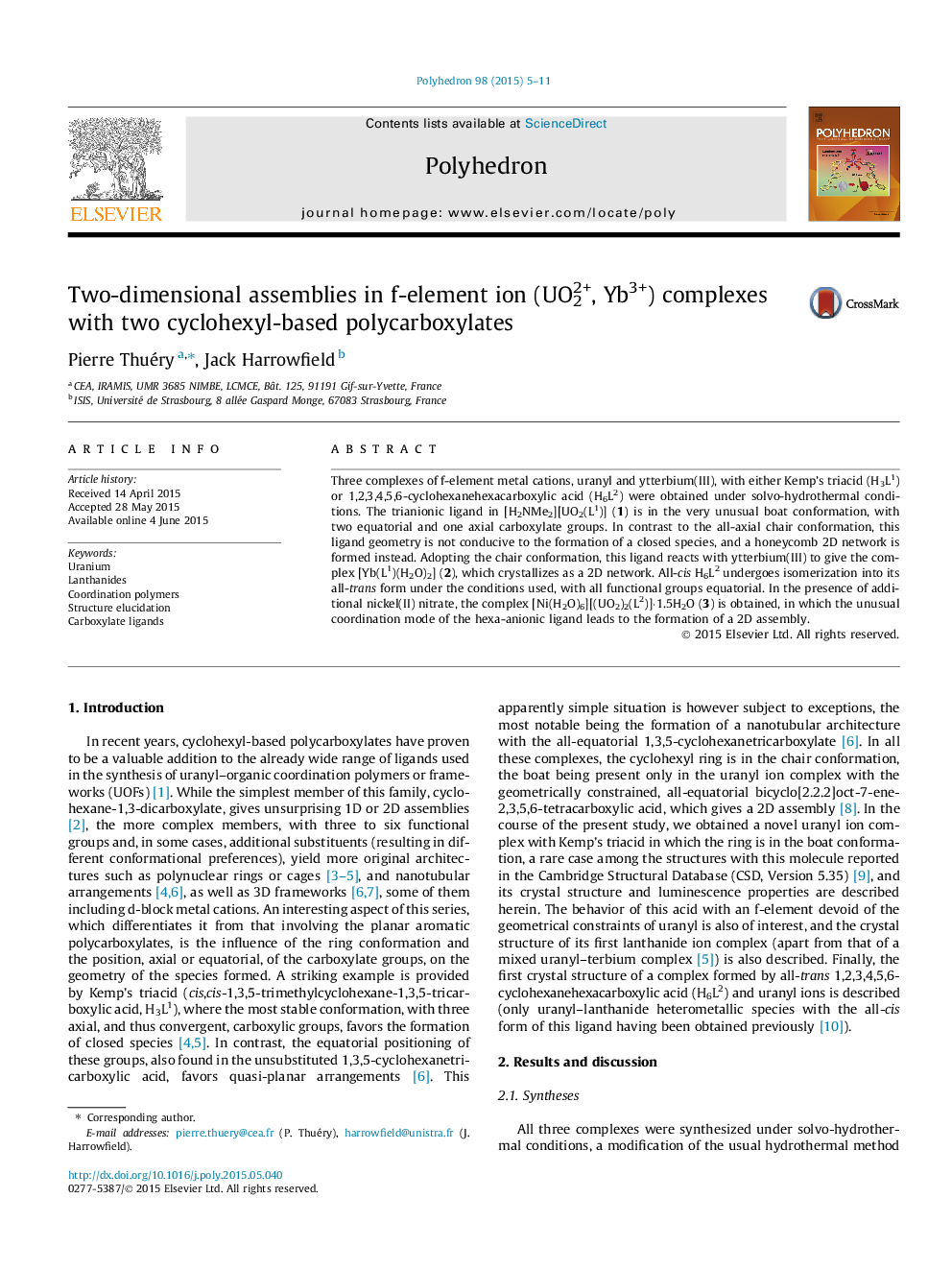| Article ID | Journal | Published Year | Pages | File Type |
|---|---|---|---|---|
| 1334335 | Polyhedron | 2015 | 7 Pages |
Three complexes of f-element metal cations, uranyl and ytterbium(III), with either Kemp’s triacid (H3L1) or 1,2,3,4,5,6-cyclohexanehexacarboxylic acid (H6L2) were obtained under solvo-hydrothermal conditions. The trianionic ligand in [H2NMe2][UO2(L1)] (1) is in the very unusual boat conformation, with two equatorial and one axial carboxylate groups. In contrast to the all-axial chair conformation, this ligand geometry is not conducive to the formation of a closed species, and a honeycomb 2D network is formed instead. Adopting the chair conformation, this ligand reacts with ytterbium(III) to give the complex [Yb(L1)(H2O)2] (2), which crystallizes as a 2D network. All-cis H6L2 undergoes isomerization into its all-trans form under the conditions used, with all functional groups equatorial. In the presence of additional nickel(II) nitrate, the complex [Ni(H2O)6][(UO2)2(L2)]·1.5H2O (3) is obtained, in which the unusual coordination mode of the hexa-anionic ligand leads to the formation of a 2D assembly.
Graphical abstractIn its unusual boat conformation, Kemp’s triacid reacts with uranyl ions to give a 2D network with honeycomb topology, while, in its common chair, all-axial conformation, it also gives a 2D network with ytterbium(III) cations. 1,2,3,4,5,6-Cyclohexanehexacarboxylic acid undergoes isomerization in situ from the all-cis to the all-trans form, and it gives a 2D assembly with uranyl ions, with a topology different from that with the analogous aromatic mellitate anion.Figure optionsDownload full-size imageDownload as PowerPoint slide
